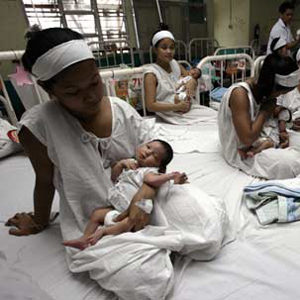MANILA – A United States-based population and health expert has warned that the Philippines could be as impoverished as Somalia because of its ballooning population.
Dr. Malcolm Potts, professor at the Bixby Center for Population, Health and Sustainability at the University of California at Berkeley, made the warning at a forum organized by the Asia Society Philippines Foundation Inc.

At the forum, he stressed that the growing population is the most important issue in the country as he pushed for the reproductive health bill pending in Congress, according to a Philippine Star report.
Potts said the Philippines’ population could hit 160 million in the next 40 years if the government would not implement an effective reproductive health policy.
The controversial bill has been opposed by pro-life groups, primarily the Catholic Church.
There have been calls for the holding of a plebiscite to get the consensus of the people on the bill that would promote family planning and greater access to maternal healthcare.
President Aquino said he will wait for the output of the congressional committees hearing the provisions of the bill and the recommendations of the Legislative Executive Development Advisory Council (LEDAC).
“Unless a reproductive health bill goes through, unless you are able to offer the poorest economic quintile living on P5 a day the choices that they deserve, then people will be poorer, you will be importing food, you will (be) more like Somalia than like Thailand,” Potts said.
Potts said that in 1970, the Philippines and Thailand had almost identical population of about 36.7 million. He said population growth rate for both countries is about three percent per annum.
In 2007, Potts said the Philippines’ growth rate was 2.04 while Thailand’s was 0.8 percent.
“Today, Thailand is very much richer than the Philippines on a per capita basis… a lot of that driven by population,” he said. According to a US study in 2001, the country’s annual rice consumption would only be 13 million metric tons instead of 18 million MT if it had only sustained its population policy and family planning programs.
“With 16 million metric tons domestic production, the Philippines would’ve been a net exporter of 3 million MT,” the study said.
Potts said a reduction in birth rate could stimulate economic growth by having more people in the workforce than dependents.



 ShareThis
ShareThis